Bio Char: Exploring a New Soil Amendment
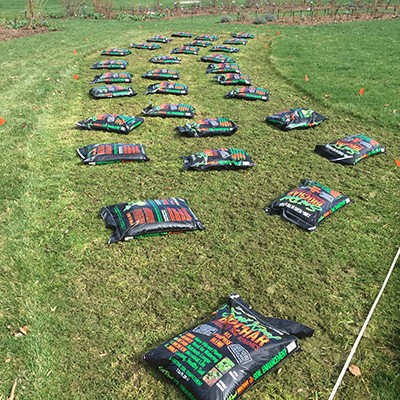 What is it? Biochar is the carbon-rich product that results when biomass such as wood, manure, or leaves are heated with little to no oxygen available – it is the solid material obtained from the carbonization of biomass. Biochar may be added to soils with the intention of improving soil nutrient content; production of biochar reduces emissions from biomass which would otherwise degrade to greenhouse gasses.
What is it? Biochar is the carbon-rich product that results when biomass such as wood, manure, or leaves are heated with little to no oxygen available – it is the solid material obtained from the carbonization of biomass. Biochar may be added to soils with the intention of improving soil nutrient content; production of biochar reduces emissions from biomass which would otherwise degrade to greenhouse gasses.
To explain this in more technical terms, biochar is produced by thermal decomposition of organic material under a limited supply of oxygen (O2), and at relatively low temperature (<700°C). This process often mirrors the production of charcoal, which is perhaps the most ancient industrial technology developed by mankind. However, it distinguishes itself from charcoal and similar materials by the fact that biochar is produced with the intention of being applied to soil to improve soil health, to filter and retain nutrients from percolating soil water, and to provide carbon storage.
Where did the process come from? Five hundred years after native Amazonian people enriched their local soil with compost, mulch, and smoldering plant matter, the dark nutrient-rich soil remains. Amazonian dark earths (often called terra preta) hold plant nutrients, including nitrogen, phosphorous, calcium and magnesium much more efficiently than unimproved soil. Even after 500 years of tropical temperatures and rainfall that averages 80 inches a year, the dark earths remain fertile.
At Cornell University in Ithaca, N.Y., microbiologists have discovered bacteria in terra preta soils similar to strains active in hot compost piles. Overall populations of fungi and bacteria are high in terra preta soils, too, but the presence of abundant carbon makes the microorganisms live and reproduce at a slowed pace.
The result of the addition of biochar is a reduction in the turnover rate of organic matter in the soil, so composts and other soil-enriching forms of organic matter last longer. In field trials with corn, rice and many other crops, biochar has increased productivity by making nutrients already present in the soil more available to plants.
Results are especially dramatic when biochar is added to good soil that contains ample minerals and plant nutrients. Research continues (The International Biochar Initiative), but it appears that biochar gives both organic matter and microorganisms in organically enriched soil enhanced staying power.
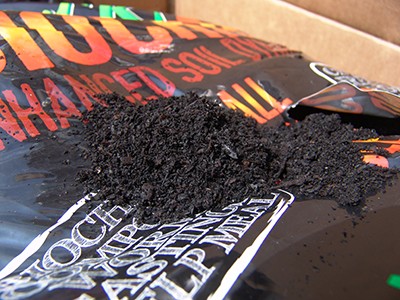
Biochar is the carbon-rich product that results when biomass such as wood, manure, or leaves are heated with little to no oxygen available – it is the solid material obtained from the carbonization of biomass. photo credit: R. Robert
Digging in nuggets of biochar — or adding them to compost as it is set aside to cure — can slow the leaching away of nutrients and help organically enriched soil retain nutrients for decades rather than for a couple of seasons.
How is it produced? Carbonization: The process of converting feedstock into biochar involves a combination of time, heat, and pressure; exposure factors that can vary between processors, equipment, and feedstocks. There are two main processes: pyrolysis or gasification. Energy products in the form of gas or oil are produced along with the biochar. These energy products may be recoverable for another use, or may simply be burned and released as heat.
Biochar can be made from a wide variety of biomass feedstocks. As a result, different biochar systems emerge on different scales. These systems may use production technologies that do or do not produce recoverable energy as well as biochar; they range from small household units to large bioenergy power plants.
What does it do?
- Reduced leaching of nitrogen into ground water
- Increased ion-exchange capacity resulting in improved soil fertility
- Moderation of soil acidity
- Increased water retention
- Increased number of beneficial soil microbes
- Reduced need for fertilizer results in reduced emissions from fertilizer production.
- Increased soil microbial life, results in more carbon storage in soil.
- Because biochar retains nitrogen, emissions of nitrous oxide (a potent greenhouse gas) may be reduced.
- Turning agricultural waste into biochar reduces methane (another potent greenhouse gas) generated by the natural decomposition of the waste.
- Carbon sequestration
Biochar improves water quality by helping retain nutrients and agrochemicals in soils for use by plants and crops, resulting in less pollution. As a soil enhancer, biochar makes soil more fertile, preserves cropland diversity, and reduces the need for as many chemical and fertilizer inputs.
Is biochar production sustainable? Of all the key factors that will support the fastest commercialization of the biochar industry, feedstock supply and sustainable-yield issues are the most important, from both a broad sustainability perspective and from financial and commercial points of view. This will require the sources of biomass selected for biochar production to be appropriate and be able to withstand a comprehensive life cycle analysis.
Biochar can and should be made from waste materials. These include crop residues (both field residues and processing residues such as nut shells, fruit pits, etc), as well as yard, food, forestry wastes, and animal manures.
Large amounts of agricultural, municipal and forestry biomass are currently burned or left to decompose and release CO2 and methane back into the atmosphere. Making biochar from these materials will entail no competition for land with any other land use option.
How do I use it?
The answer to this question comes down to your existing soil. Sandy soils benefit from the help to hold onto vital moisture and nutrients. Clay soils benefit from better texture to drain excess water while retaining the nutrients and providing space for developing roots. Rich loamy soils benefit from smaller amounts that help retain existing moisture and nutrients as well as providing spaces for beneficial microbes and mycorrhizal fungi. Before incorporating biochar, perform a soil test to determine your soil type.
The following are general recommendations for usage:
http://carboncultures.com/how-much-biochar-do-you-need
| Depth of Application: | 6? | 3? |
| 1 Acre: | 40 cubic yards | 20 cubic yards |
| 1,000 square feet: | 1 cubic yard | 0.5 cubic yards |
| 100 square feet: | 20 gallons | 10 gallons |
Applications:
- into turf grass via aeration holes
- in structural layers while constructing golf course greens
- broadcast and uniform mixing while applying new topsoil
- in growing media for potted nursery production
- to the surface of large planting beds, orchards, or in-ground nursery operations
- subsurface banding
- broadcasting applications on large turf areas or woodlands
- layer under newly constructed structures and paved areas for carbon sequestration
What are we trying at the Scott Arboretum?
Over the past three years, the Dean Bond Rose Garden has gone through a renovation, beginning with soil testing and the addition of lime to adjust the pH to neutral.
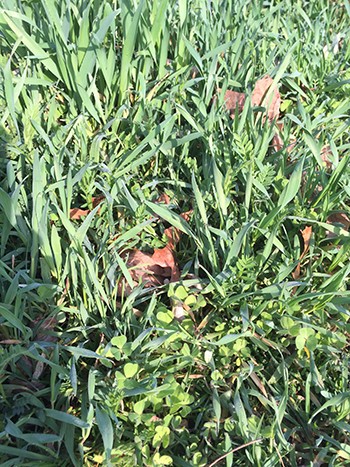
A cover crop of crimson clover (Trifolium incarnatum), buckwheat (Fagopyrum exculentum), and hairy vetch (Vicia villosa) was planted. photo credit: A. Glas
The garden was then divided in half. Both sides received a cover crop of crimson clover (Trifolium incarnatum), buckwheat (Fagopyrum exculentum), and hairy vetch (Vicia villosa). This cover crop was mowed to a half-inch in mid-April and then tilled under. The “half” of the garden closest to Parrish Hall received a half-inch broadcast spread of BioChar before being tilled.
As the Dean Bond Rose Garden grows over the next several years, visitors and gardeners can make a direct comparison of the benefits of biochar.
You can try biochar in your own garden this year with the 2015 Potting Mix and BioChar Sale through Scott Arboretum (available at the Members Plant Exchange and Sale) or through Redbud Native Nursery. Mail orders are due by May 9, download here.





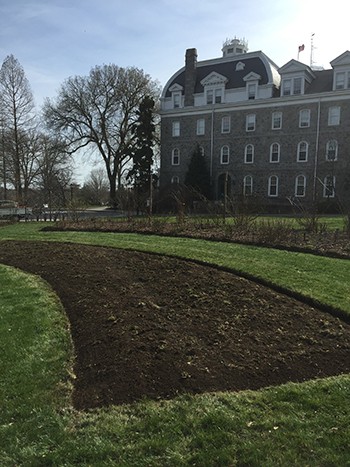
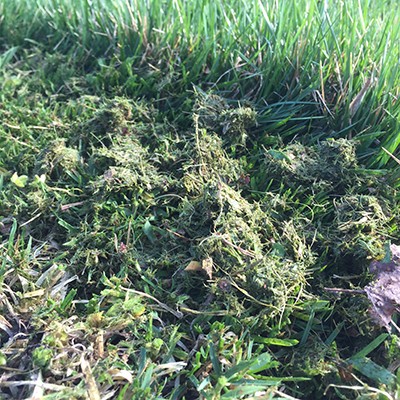
No Comments